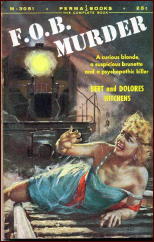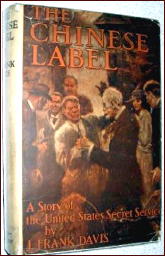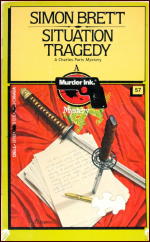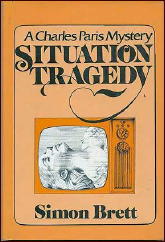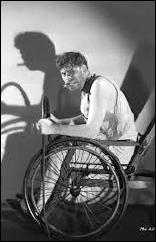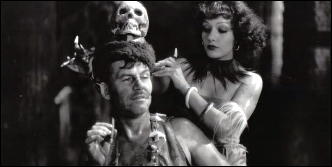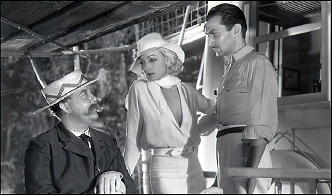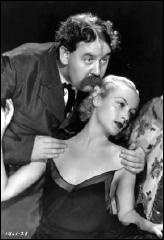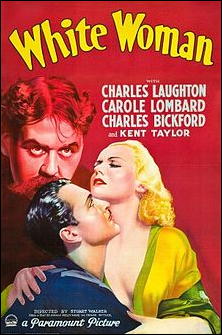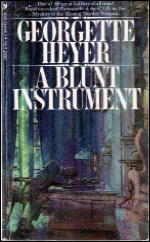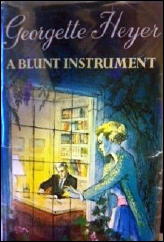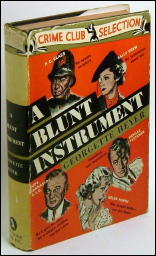Reviewed by DAVID VINEYARD:

DAVID BISHOP – Original Alibi: A Matt Kyle Mystery. David Bishop/Telemachus Press, softcover, July 2012.
Spoiler Warning:
This is a great book, it is, in fact, one of the best books I’ve ever read. At least it was when Raymond Chandler penned it as The Big Sleep, the first Philip Marlowe novel. As the second Matt Kyle novel, it’s not so hot.
David Bishop is a bestselling writer of e-books including two other mystery series. He’s a competent enough scribe, as such things go, but there isn’t an original idea in the book or an original line or an original character. If this is what the genre is like in electronic form then it shouldn’t be hard to gain grandmaster status, this is tired, borrowed, too often copied (I won’t say plagiarism, that would imply at some point it actually sounded like Chandler), terribly dated, and a bit silly.
And those are the good points.
Bestselling writer Matt Kyle was a cop who executed a rapist in cold blood and went to jail. On coming out he took up writing and got a PI ticket in California (you can’t get a PI ticket in California if you were in prison — The Outsider to the contrary — as any viewer of Rockford Files will recall — Rockford only got his because he was pardoned).
Now he lives in a condo with a balcony and Axel, an ex-con he befriended acts as his valet — he can’t get rid of him, actually — and general errand boy and hacker. Save for the hacker part this is an entry in the Falcon B movie series — come to think of it one of those (The Falcon Takes Over) was based on a Chandler novel, different novel (Farewell My Lovely), but FYI, as if anyone reading this didn’t already know.
Yes, he has a valet. I’m not sure I recall any other PI’s with valets other than Lee Thayer’s Peter Clancy. Lester Leith had one, but he was primarily a thief and gentleman crook. Radio’s The Fat Man, Brad Runyon had one, but not from Hammett. I recall the hero of Raoul Whitfield’s Killer’s Carnival having one, but he was a big game hunting playboy, not an eye. Erle Stanley Gardner’s Terry Clane had a valet, but he was a lawyer and soldier of fortune. I suppose we should be grateful it’s not Eric Blore or Mantan Moreland (though they were often the best part of those films).
General Whittaker, formerly of the Joint Chiefs of Staff, is old and dying in his wheelchair and his private sanctuary and wants to know who murdered his pregnant granddaughter-to-be, Ileana Corrigan, and set up his no good son Eddie before he dies. Kyle likes the old man, and wants to help him so he takes the cold case. The General also has a daughter, Karen, who drops her scanties at the glance of a man — and Kyle does a lot of glancing. She doesn’t quite climb into Kyle’s lap standing up or have a slinky sister, but her name might as well be Carmen.
Kyle, on the other hand, doesn’t throw her out of his bed and have a hissy fit tearing up the bedclothes, but then Karen’s not as perverse, crazy, or lethal as Carmen. She’s just a slut who would like to inherit a bigger chunk of daddy’s money, and doesn’t mind sleeping around to do it.
At one point Bishop breaks away from Kyle’s narrative to show us Karen seducing the chauffeur to get him to beat up Kyle. There’s no reason to tell the reader this rather than let us discover it when Kyle does, other than a tame and rather dull seduction scene. It doesn’t generate suspense or deepen character. All it does is make the hero look like a bigger chump.
Kyle also has a cop buddy called Fidge and then there’s the police captain Richard Dickson, Double Dick, who dislikes him, but all the cops hate Double Dick and like Matt …
Every private eye has to have a cop buddy.
Save for the parts borrowed from Chandler the rest of the book and the characters are series television quality plotting, not incompetent, but shallow and with no depth. This wouldn’t pass in a first semester writing course. It’s derivative and not felt. It’s precisely the kind of writing instructors try to beat out of students’ heads. You can’t reinvent the wheel, or rewrite a great book as your own.
He could have at least have made it an Admiral instead of a General.
He even uses the necktie bit.
This is not crude, imaginative, violent, savage, or sexy enough to be good pulp — even bad pulp. Frank Kane’s Johnny Liddell and Carter Brown might have been generic private eye, but at least they were the real thing. This is authentic as a Cracker Jack police whistle, and about as shrill.
There is a point when homage crosses the line. Original Alibi homages the hell out of The Big Sleep.
And, just saying, but you really shouldn’t write about prison if your idea of it came out of James Cagney movies. Matt Kyle seems to have been sentenced to 1946 prison. You should at least watch an episode of Lockup, or Prison Break.
This is prison a la Boston Blackie. He even mentions Boston Blackie, and I’m pretty sure its Kent Taylor, not Chester Morris since he goes on about the mustache. Apparently he isn’t aware of the term ‘pencil thin’ and never heard of David Niven, so its a Boston Blackie mustache for all ten of us who don’t have to look up Boston Blackie or Kent Taylor on Wikipedia or in IMDb.
I know many writers don’t like research, and I don’t expect him to be Max Allan Collins or Loren D. Estleman, but you should have some idea of how the police and actual PI’s work and what they can and cannot do. You could at least watch some old PI movies and television series and pay attention. He’s watched them, but he didn’t pay attention. He can’t have.
I don’t care how much you bribe him, no CSI can give you next day DNA results. That only happens on television because they have to telescope time. The television writers know better, their technical advisor told them. This book needs a technical advisor, and a writing course, and a class in ethics ….
Your sole experience of life as you write about it cannot be second hand from books, movies, and television. You need to have experienced or observed something for yourself. You don’t have to be a private eye to write about one, or to have gone to go to prison to write about that. You do have to learn about those things then put yourself in those positions.
You can’t write any book from the outside like this and expect it to be good. You have to believe it yourself. If you don’t why bother to write a mystery and expect a reader to read it? It isn’t just coming up with an unusual weapon, a few twists, a femme fatale, and hero. The unusual weapon has to figure in the plot as more than a weapon, the twists have to come from the plot, the femme fatale has to be more than just a slut, and the hero has to be a hero for a reason, not just because you chose him.
Matt Kyle might have been more. The back story is dark enough, but Kyle is strictly light weight in voice and action. He reads something like a sixteen-year-old wanna-be Marlowe might write, not like a man who went to prison and still believes he was right. Donald Lam and Archie Goodwin are darker than this. They exist, Matt Kyle never does. You can’t even work up empathy when he is being beaten up (this scene was ‘borrowed’ from The Glass Key, he expanded from Chandler) or is in one dull improbable fight.
At no point will you believe Matt Kyle is anything more than a voice, and not one you really want to listen to.
Did I mention General Whittaker’s chauffeur is a lot like Rusty Regan from The Big Sleep? Just asking. He’s even involved with the general’s daughter with the revolving door to her bedroom.
Most of the time you will have to fight to remember this is set now. If you keep thinking it’s 1946 you can be forgiven. I’m not sure the author has read a PI novel since 1946. I’m not sure he read any books but The Big Sleep, though he constantly references other movies and books; not Raymond Chandler of course. Under the circumstances you wouldn’t want to remind anyone of Raymond Chandler.
A valet?
Oh, there’s something else I have to mention.
The butler did it.
No kidding, and without so much as a hint of irony. I’m not sure he or his hero even get it. The butler did it.
I should be fair, I downloaded this for free.
You get what you pay for.
The butler did it.
I’m not exactly sure how many e-books you have to sell to achieve bestseller status. Bishop seems to have sold enough. He won’t be selling any to me, but so long as Amazon pays up he likely doesn’t care.
I am a little angry though. There are readers out there who read this and think it represents the genre. They haven’t read Chandler or seen Hawks The Big Sleep so they don’t know they are reading re-warmed dreams and second hand metaphors. They don’t know who Ross Macdonald, Thomas Dewey, Brett Halliday are, and Mickey Spillane is a name from a beer commercial, not an experience.
They are readers and we should care that this represents our genre. I don’t know what can be done, but surely we can at least speak out, rail against the night so to speak.
But this was free, keep in mind.
It’s just not quite worth what I paid for it.
